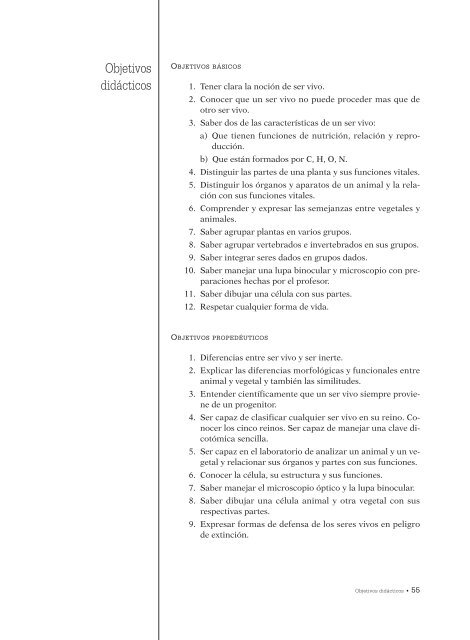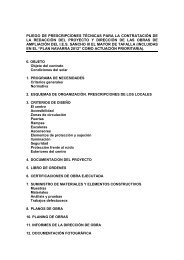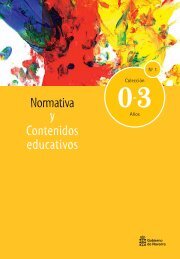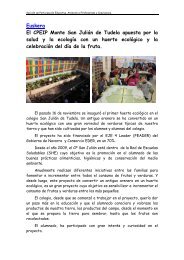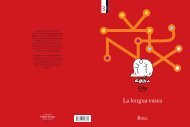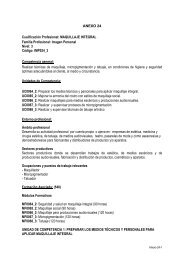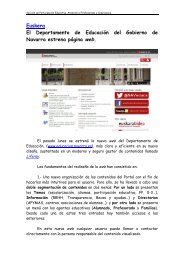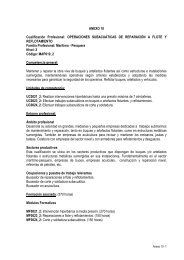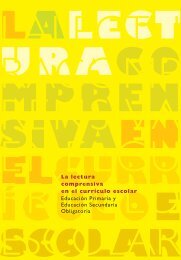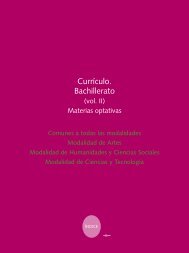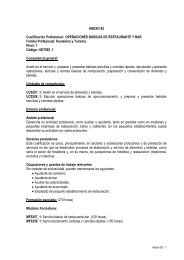Ciencias de la Naturaleza.
Ciencias de la Naturaleza.
Ciencias de la Naturaleza.
- No tags were found...
Create successful ePaper yourself
Turn your PDF publications into a flip-book with our unique Google optimized e-Paper software.
ObjetivosdidácticosOBJETIVOS BÁSICOS1. Tener c<strong>la</strong>ra <strong>la</strong> noción <strong>de</strong> ser vivo.2. Conocer que un ser vivo no pue<strong>de</strong> proce<strong>de</strong>r mas que <strong>de</strong>otro ser vivo.3. Saber dos <strong>de</strong> <strong>la</strong>s características <strong>de</strong> un ser vivo:a) Que tienen funciones <strong>de</strong> nutrición, re<strong>la</strong>ción y reproducción.b) Que están formados por C, H, O, N.4. Distinguir <strong>la</strong>s partes <strong>de</strong> una p<strong>la</strong>nta y sus funciones vitales.5. Distinguir los órganos y aparatos <strong>de</strong> un animal y <strong>la</strong> re<strong>la</strong>cióncon sus funciones vitales.6. Compren<strong>de</strong>r y expresar <strong>la</strong>s semejanzas entre vegetales yanimales.7. Saber agrupar p<strong>la</strong>ntas en varios grupos.8. Saber agrupar vertebrados e invertebrados en sus grupos.9. Saber integrar seres dados en grupos dados.10. Saber manejar una lupa binocu<strong>la</strong>r y microscopio con preparacioneshechas por el profesor.11. Saber dibujar una célu<strong>la</strong> con sus partes.12. Respetar cualquier forma <strong>de</strong> vida.OBJETIVOS PROPEDÉUTICOS1. Diferencias entre ser vivo y ser inerte.2. Explicar <strong>la</strong>s diferencias morfológicas y funcionales entreanimal y vegetal y también <strong>la</strong>s similitu<strong>de</strong>s.3. Enten<strong>de</strong>r científicamente que un ser vivo siempre proviene<strong>de</strong> un progenitor.4. Ser capaz <strong>de</strong> c<strong>la</strong>sificar cualquier ser vivo en su reino. Conocerlos cinco reinos. Ser capaz <strong>de</strong> manejar una c<strong>la</strong>ve dicotómicasencil<strong>la</strong>.5. Ser capaz en el <strong>la</strong>boratorio <strong>de</strong> analizar un animal y un vegetaly re<strong>la</strong>cionar sus órganos y partes con sus funciones.6. Conocer <strong>la</strong> célu<strong>la</strong>, su estructura y sus funciones.7. Saber manejar el microscopio óptico y <strong>la</strong> lupa binocu<strong>la</strong>r.8. Saber dibujar una célu<strong>la</strong> animal y otra vegetal con susrespectivas partes.9. Expresar formas <strong>de</strong> <strong>de</strong>fensa <strong>de</strong> los seres vivos en peligro<strong>de</strong> extinción.Objetivos didácticos • 55


